Many industries have come to employ the compact cameras, sensors, batteries, processors, and communications technologies made ubiquitous by consumer products. Electromagnetic brakes complement such designs with miniature formats.
By Brian Mather | Industrial product manager • Ogura Industrial Corp.
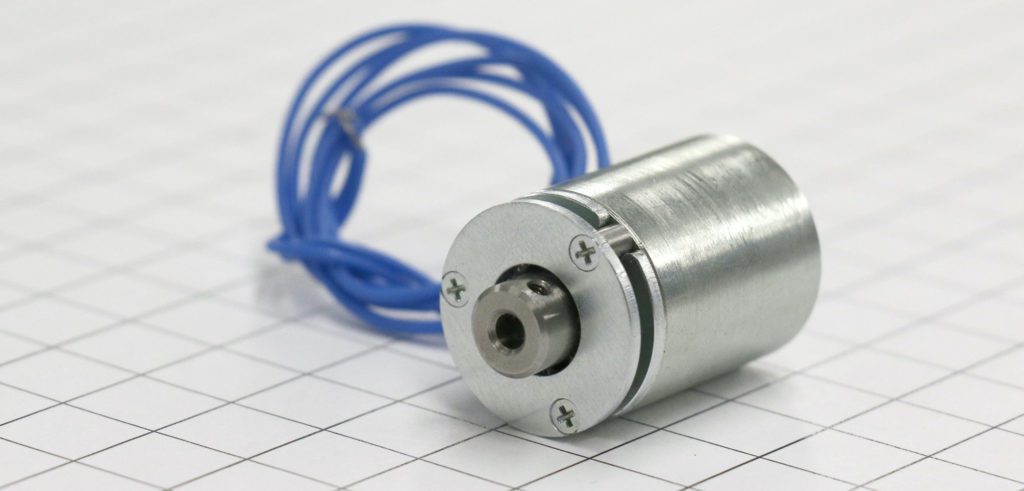 Oh, how times are changing. Zoom meetings are the norm. Children all over the world are experiencing cyberschooling. Robots are picking our produce. Doctors are performing surgery on patients while standing miles away.
Oh, how times are changing. Zoom meetings are the norm. Children all over the world are experiencing cyberschooling. Robots are picking our produce. Doctors are performing surgery on patients while standing miles away.
Such developments are out of necessity, convenience, health, safety, and consumer demand. They’re also the result of advancements in manufacturing along with evermore-capable design and computing options.
In fact, many new applications in the medical, robotics, aerospace, and automotive industries require compact mobile designs. These frequently employ small electric motors … and those motors sometimes need brakes or clutches. As we’ll explore, electromagnetic brakes are often the most suitable complement to such designs.
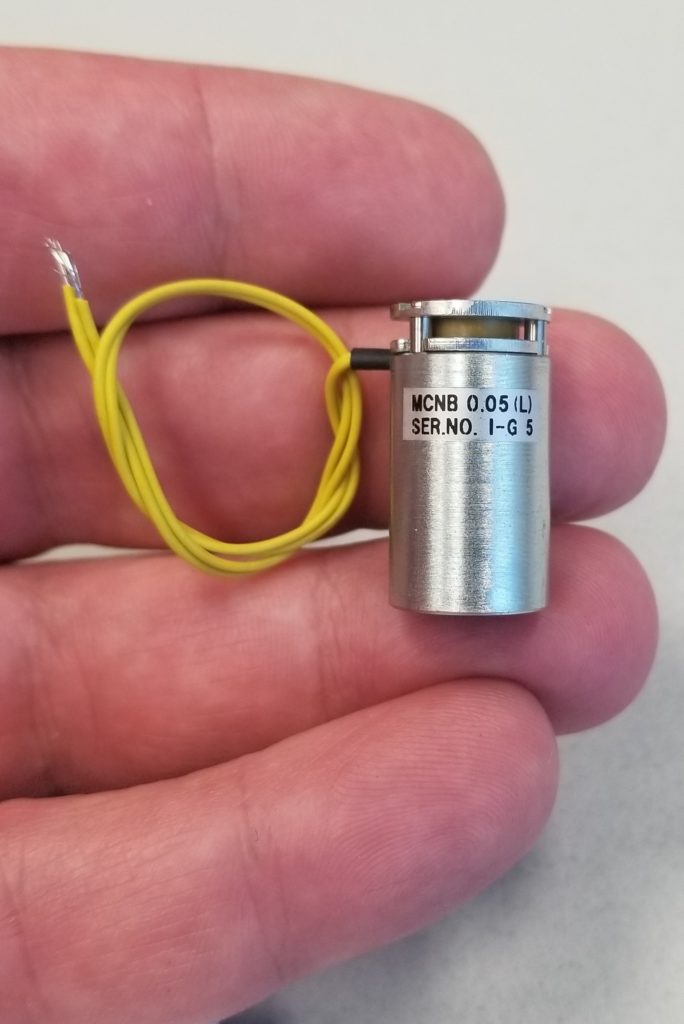
Miniature brake applications in medical devices
In the medical industry, miniature electromagnetic motors and brakes work in curative tools and surgical equipment.
Consider how cameras and sensing equipment have advanced so dramatically that medical personnel can now see things inside the body in detail never before imagined … and can use precision controls to operate small devices inside patients to scope areas of concern. In a similar way, the latest surgical equipment operates with a surgeon driving motions through controls via robotic-assist functions. Such functionality provides better surgical outcomes with minimally invasive procedures, quicker recovery times, and lower total cost from start to finish. In some cases, doctors can even execute surgeries from another room or even another city.
For robotic and handheld battery-powered equipment in these applications, equipment must be extremely reliable with highest precision. Here, high-ratio gearboxes on the motor output help with precision positioning — to maintain the highest level of safety. Motors on motion axes in many such designs also need brakes for holding and emergency stops. The challenge is that brakes in these devices must be lightweight with low power requirements for ergonomics and longevity.
Electromagnetic brake uses in the robotics industry
The robotics industry is diverse … we’ve just touched on medical robotics. There are other industrial-grade mobile robotics with some things in common: Motors and brakes in articulating robotic arms must be lightweight so that the fast-moving arms have less inertia — and a maximum amount of the joint torque capacity. Less inertia means less power required, quicker response, and more output.
For example, a brake with a 10-mm OD and 9-mm width weighing 7 g can disengage with overexcitation for a short period at 4 W — and stay disengaged with only 0.34 W. Any extra weight means more power loss on a mobile robot’s battery. Though batteries are longer-lasting than ever before, it’s still a common design objective to have more uptime with less charge time and minimal operating cost.
In robotics, smaller and thinner brakes allow for greater system output. After all, a properly customized and optimized brake delivers the highest holding torque with lowest weight and lowest power demand possible — especially from electromagnetic variations having maximized magnetic flux strength. Properly specified brakes can also withstand millions of reliable cycles — preventing downtime that in a robotic application can cost significant money … and hinder other operations as well.
In fact, motor brakes in wheel drives are especially important for inclines, personnel safety, or product safety. The catch is that any servicing a mobile robot may require is often beyond any knowhow of inhouse personnel. So these robots benefit from brakes that can operate over wide temperature ranges and even exposure to moisture. Here, brakes incorporating special materials and sealing designs excel — especially brakes with bodies that do double duty as motor-housing endbells.
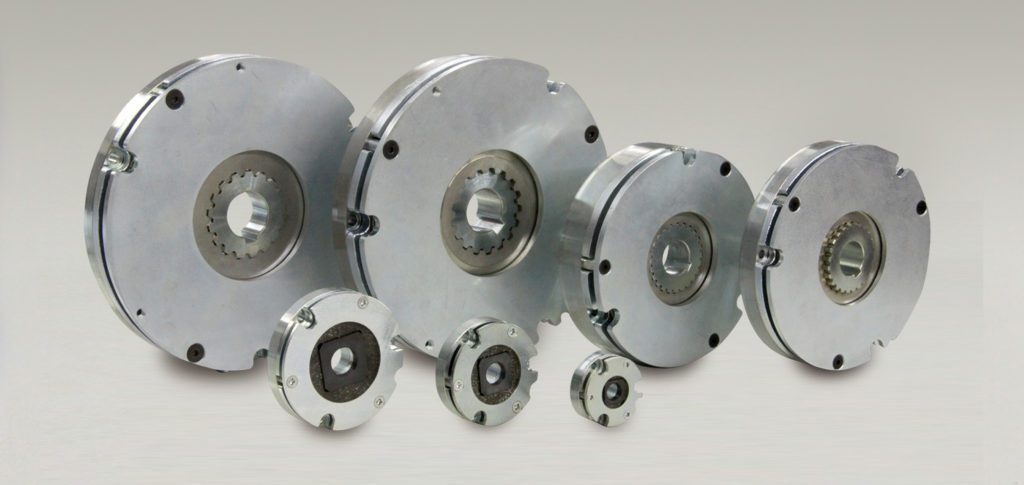
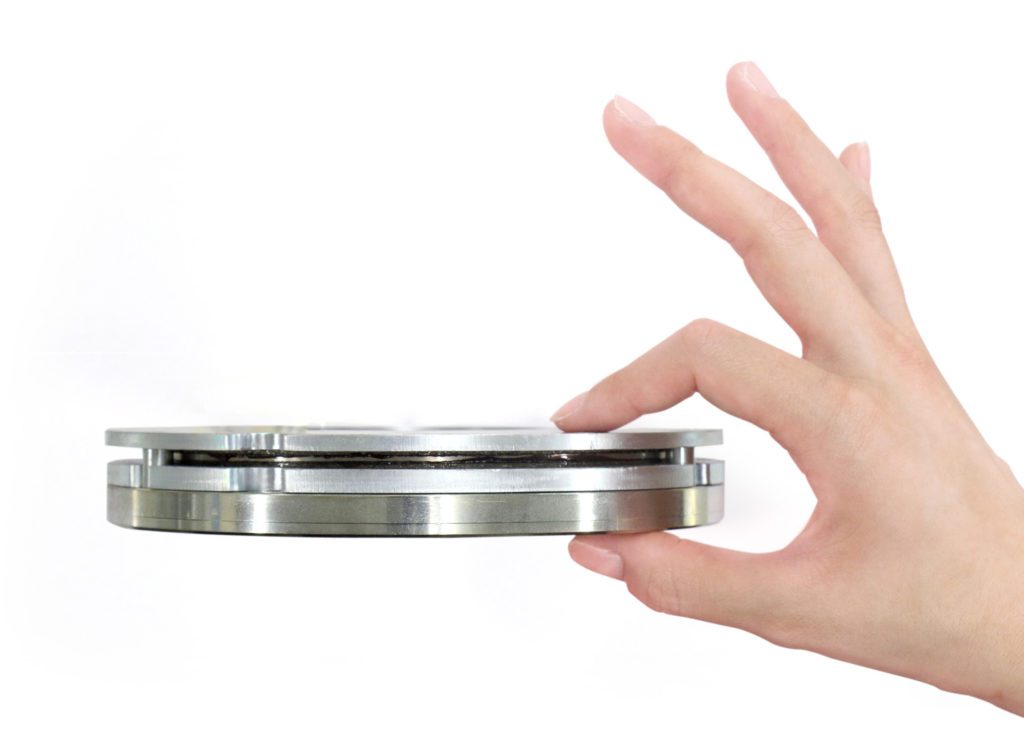
The special case of aerospace for electromagnetic brakes
In aerospace applications, power and weight are most important. The primary design objective remains the same whether the brake installs on a fighter jet’s wingflap actuator or on a seat actuator in a private plane. These brakes must deliver the most torque output with smallest size, weight, and power. In this industry, there is a strict correlation between weight to power and total cost.
No wonder that in aerospace applications, it often makes sense to use customized brakes. Brakes here must often survive a wide range of operating temperatures and other extreme conditions inducing highest coil resistance. As we’ll explore in more detail, the low power requirements for an electromagnetic brake also help to minimize heat buildup.
Automotive applications for miniature brakes
The automotive industry is increasingly focused on producing electric and autonomous vehicles. Such designs make copious use of electric motors and motor brakes. Case in point: Actuators in powered door systems need holding brakes with typical automotive specifications and quality. Steering systems often need autonomous and manual steering capabilities employing small electric motors and brakes and clutches as well. In fact, a whole host of new functions on cars are now expected … functions often driven by electric-motor-based actuators for more convenience, safety, and service. So the convenience of powered sliding van doors that was introduced years ago is now seen in powered doors and powered pickup-truck tailgates and more. On autonomous cars such powered door functions aren’t extras but core to the vehicles’ usability.
Brakes in such applications must fit in exceptionally tight spaces and be of relatively lowest cost and high reliability — and capable of delivering precision torque. Brakes made with advanced manufacturing techniques by experienced automotive suppliers excel here. This has led to the use of electromagnetic brake variations in the electrification of off-road vehicles and construction equipment — in their wheel drive systems and other subsystems.
Miniature brake details
The brakes that go into all these applications are often electromagnetic spring-applied power-off brake variations … some as small as 8 mm OD. Such brakes can reliably handle the torque load of the motors with which they dimensionally pair. Some models can be as thin as 9 mm — round or square in shape. Elements limiting just how thin brakes can be include the pressure plate, friction material, cover plate, airgap, coil, and coil body. Where justified by a need for controlled stops or higher torque density, permanent-magnet brake versions may be most appropriate.
Accommodating encoders: Small motors are often fitted with encoders. Where this is the case, accommodations can be made to mount both a brake and encoder. Typically, the brake body is designed to allow for the mounting of the encoder inside. This requires that the motor manufacturer or equipment OEM collaborate with the brake manufacturer.
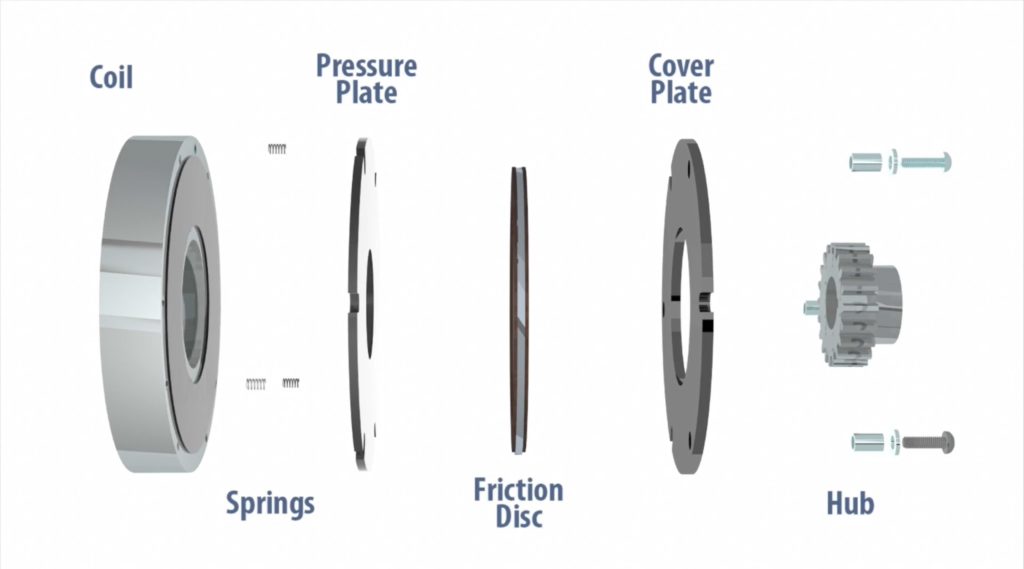
Customization: To optimize a brake’s torque capacity, airgaps on the miniature brakes are minimized. This is done through manufacturing techniques that differ from those used to make larger brakes. In addition, flux paths are maximized with special modeling software complemented by the component maker’s experience. Further maximizing torque is friction material specially selected for the application at hand.
Note that most holding brakes use a friction material that provides higher torque than that of dynamic brakes. The latter employ friction materials having lower coefficients of friction (though more suitable for limiting frictional wear). Static holding brakes are typically designed to withstand some emergency stops as well.
A brake’s spring forces can also be optimized for the design to provide the highest possible torque.
Power density: Minimizing airgaps on a brake serves a second purpose — to limit power requirements. Consider how overexcitation can disengage a spring-applied power-off brake. This is quick short-duration burst of power followed by a lower power supply to maintain the disengaged status. It’s useful because it takes more power to disengage a brake than it does to keep it disengaged. To illustrate, a design can be made to disengage a brake at 24 V but then power can be dropped to 7 V to maintain disengagement. Such operation also helps mitigate heat buildup in the coil body.
Above: When power is applied, magnetic flux is created. That in turn pulls the pressure plate toward the coil body — compressing the springs and freeing the friction disc to allow rotation. Airgaps are a critical feature of an electromagnetic spring-applied brake. The airgap shown in the cutaway is with the brake engaged and no power being applied.
How is this functionality built into a customized brake? Well, it’s done through optimization of magnetic flux during the design stage. Recall from basic physics that magnetic flux naturally follows the path of least resistance. Within an electromagnetic brake, it takes stronger flux to jump the airgap when engaged. Also, the springs in spring-applied brakes need to compress as the pressure plate crosses the airgap. Once compressed, the pressure plate contacts the field coil … and the holding power is strong with power applied.
Cost: Considerations abound — although upfront component costs are the most obvious. Installation has a cost. Most miniature brakes are mounted with a press fit on the motor shaft. The torque is very low, so the mechanical fit is often sufficient to prevent slipping. Larger brakes still have D or double-D shaft fittings or setscrews for low vibration applications. Automotive applications tend to have a spline fit.
Weight can also be considered a cost factor for mobile applications, as these have an associated dollar cost per pound based on load and battery power required.
Other cost factors include a design’s expected life, maintenance requirements, and warranties. Most motor brakes should be rated for the life of the motor or application … but if the brake or motor is rated to be a service part, then servicing becomes part of the design’s cost. Of course, warranties include the price of a customer relationship, brand strength, time lost, warranty process, and potential product replacements.
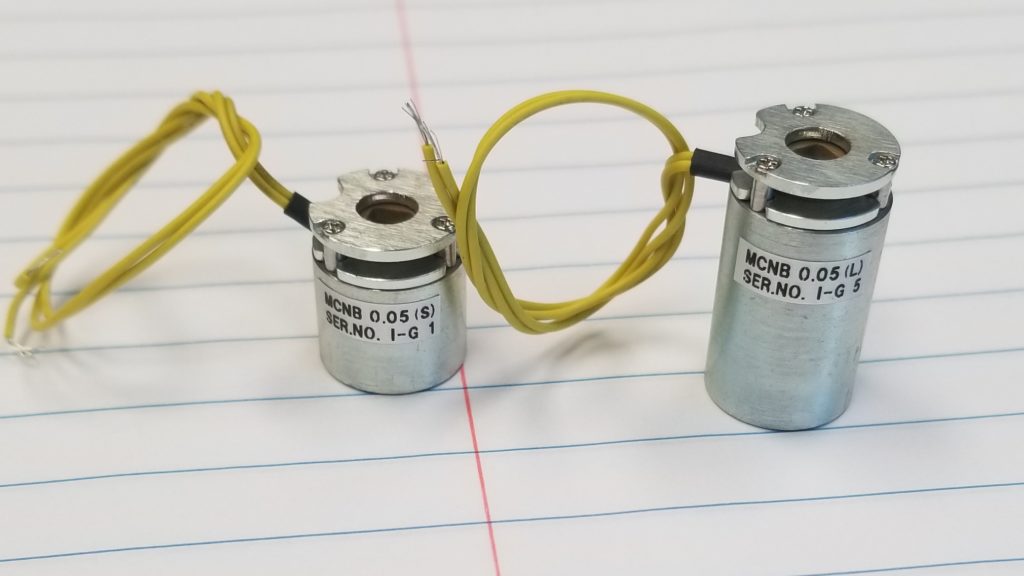
Carefully consider your brake supplier
Given the world’s technology bursts and the necessity of getting designs to market quickly, there’s no time to get details wrong. Engineers want to design the best solution confident that it will perform as expected —and that their suppliers can deliver the design’s components in a reliable and consistent manner. If applications aren’t reviewed fully in the initial stage, there is a potential for major losses in time and money for failed testing and retesting.
Resource availability is also scarce at many of the equipment OEMs. By choosing an experienced and forward-thinking supplier, problems can be foreseen … and solutions can be discussed before the testing process even starts. Weights and power requirements can be minimized, and assemblies can be optimized — along with product size and cost.
Brake suppliers can be more than parts suppliers; they can be solutions providers. But vet your brake supplier on their expertise and experience … and look for brake manufacturers that have high-volume repeatability in their manufacturing as well as experience in applications that are similar to yours. Also ask for their input at the earliest design stages: You may find the solution to a problem you didn’t yet know you had.
Ogura Industrial Corp. | ogura-clutch.com

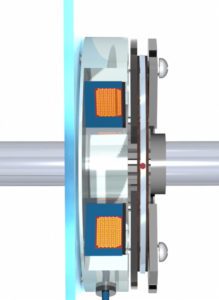
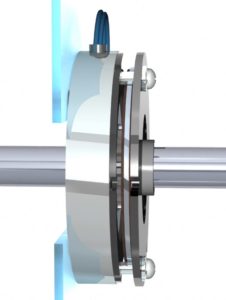
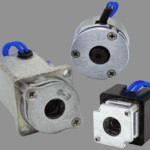
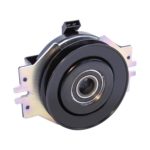
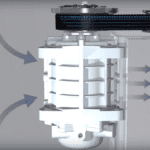

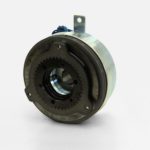

Leave a Reply
You must be logged in to post a comment.